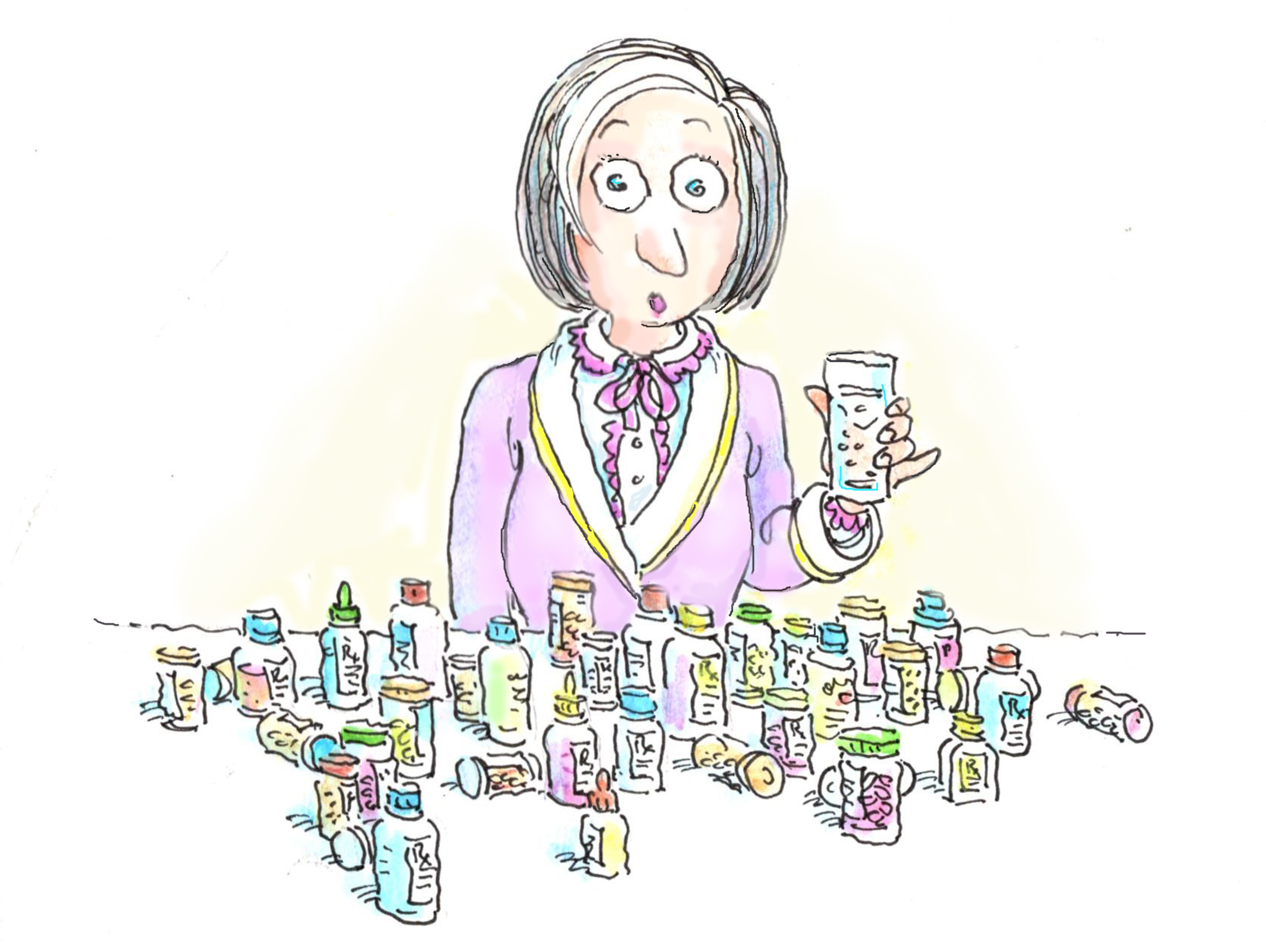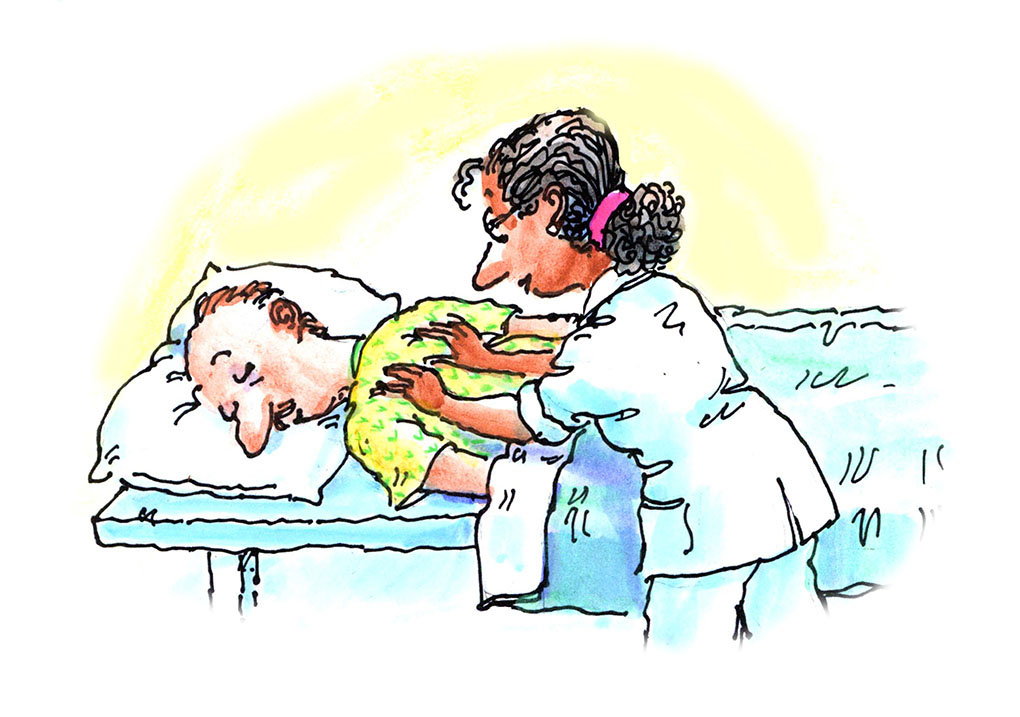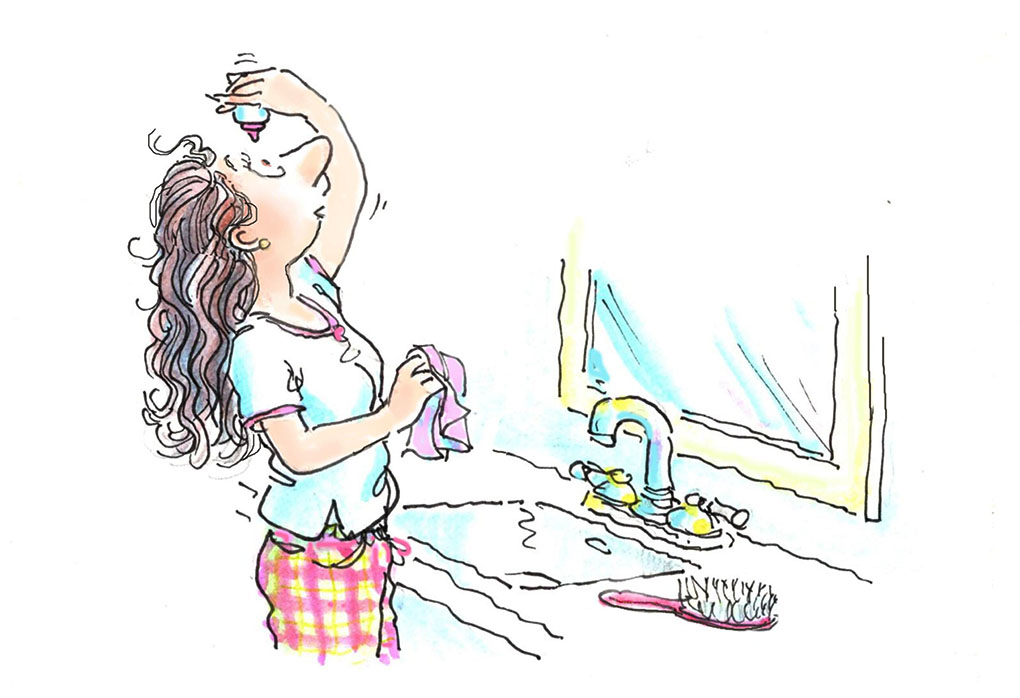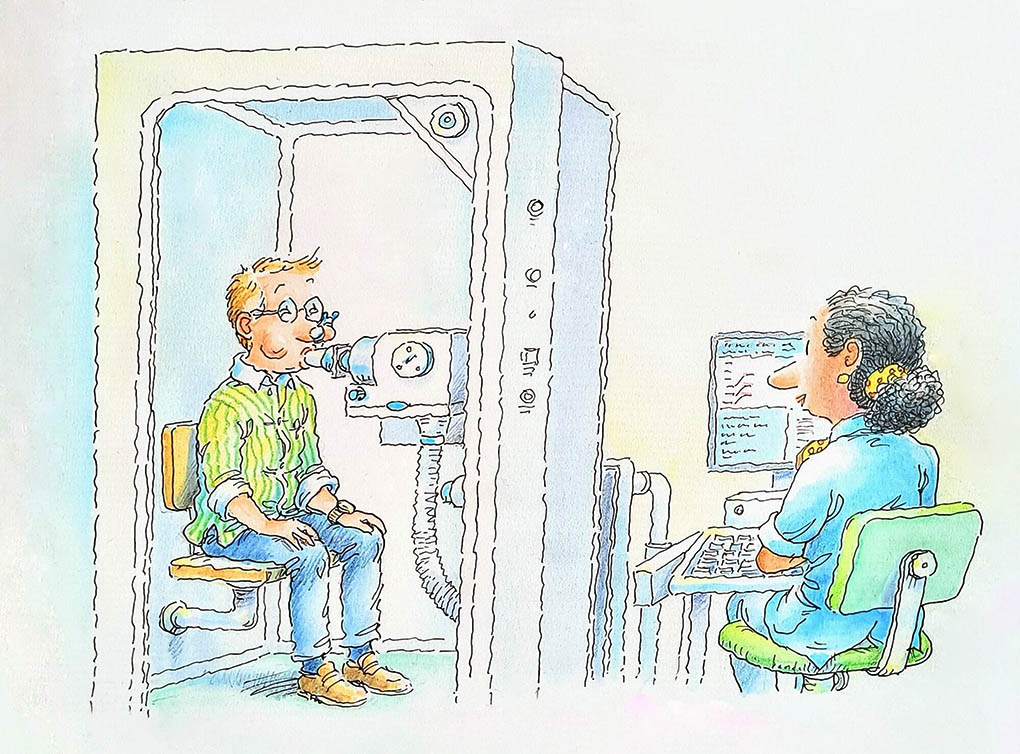Chronic GVHD occurs most often in patients who:
- previously had acute GVHD
- are older
- were transplanted with cells from an unrelated donor or from a donor who was not a perfect match
- were transplanted with stem cells collected from the bloodstream, rather than bone marrow or cord blood
- are a male and received cells from a female donor
- received cells from a female donor who previously bore children
Most cases of chronic GVHD are mild or moderate. However, some patients develop more severe symptoms.
Carefully inspect your mouth, eyes, skin, joints, and genitals for any changes. Don’t ignore subtle changes. Report anything unusual to your doctor immediately. If you notice a change, don’t assume it is nothing to worry about. Ask your healthcare team to be sure.
Organs Affected by Chronic GVHD
Chronic GVHD can affect only one organ but usually affects multiple organs and tissues at the same time. Click on organs listed below for details about symptoms and treatment options.
Treatment for Chronic GVHD
 How your doctor manages your chronic GVHD depends on which organs and tissues are affected, the severity of the symptoms, and the impact GVHD is having on your daily life.
How your doctor manages your chronic GVHD depends on which organs and tissues are affected, the severity of the symptoms, and the impact GVHD is having on your daily life.
If chronic GVHD affects only one or two organs or tissues, your doctor may choose a localized therapy, such as an ointment, mouthwash, or eye drops to relieve symptoms.
If chronic GVHD is affecting many different parts of your body or if the symptoms are severe, your doctor may need to treat it with drugs that suppress your immune system, such as:
- prednisone
- prednisone with cyclosporine or tacrolimus
- sirolimus
If your chronic GVHD does not respond well to these treatments, your doctor may try other drugs or treatments, such as:
- abatacept
- axatilimab
- belumosudil
- extracorporeal photopheresis
- ibrutinib
- low dose interleukin-2
- methotrexate
- mycophenolate mofetil
- ruxolitinib
- sirolimus
Patients with chronic GVHD typically require treatment for three to five years. Approximately 15 percent of patients require treatment for a longer time period, and, in rare cases, some patients need life-long immunosuppressive drugs.
- Skin, Nails, Hair, and Sweat Glands
 Chronic GVHD most often affects the skin. Symptoms may include:
Chronic GVHD most often affects the skin. Symptoms may include:- a dry, itchy rash
- burning sensation when exposed to sun or heat
- taut skin, tightening or pulling sensation
- change in skin color
- thickening of the skin that may restrict joint movement
- taut skin
- cellulite-like appearance on skin
- thinning of the skin, easy skin tearing
- scarring
- swelling
- sores or wounds
GVHD may also cause:
- brittle or splitting fingernails and toenails
- hair loss or thinning hair on the scalp, face, or body
- changes in hair color or texture
- difficulty opening your mouth fully due to taut skin around the mouth
- an inability to sweat or handle heat for long periods of time due to damaged sweat glands
- difficulty breathing due to tight skin around the chest
- feeling full quickly because skin on the abdomen is taut
Topical treatments such as corticosteroids, pimecrolimus cream, or tacrolimus ointment, combined with systemic treatment, may relieve some of these symptoms.
Extracorporeal photopheresis or phototherapy with ultraviolet radiation, given under medical supervision, are also used to treat certain kinds of skin GVHD.
Watch a video about extracorporeal photopheresis.
Take Action!
Inspect your skin weekly and tell your doctor right away if you have any symptoms of skin GVHD. Early detection and treatment can speed up recovery and improve long-term results.
 Use fragrance-free ointments or creams daily to keep your skin moist. Ointments and creams work better than lotions.
Use fragrance-free ointments or creams daily to keep your skin moist. Ointments and creams work better than lotions.Skin GVHD increases your risk of developing skin cancer. Report any new or changing spots on your skin to your doctor.
Protect your skin from exposure to the sun. Remember that the sun’s rays can be just as damaging on a cool, cloudy day as they are on a hot, sunny day. When outside:
- wear a hat, a shirt with long sleeves, and pants
- use a strong sunscreen (SPF30 or higher) on any exposed skin
- avoid being in the sun between 10 AM-3 PM, the peak UV hours
- use UV window filters
Companies like Sun Precautions® and Coolibar® offer sun protective clothing that can help shield your skin from the sun’s harmful ultraviolet rays.
A laundry additive called SunGuard™ adds sun protection to your everyday clothing.
- Joints, Fascia, and Muscles
Chronic GVHD sometimes affects the joints, fascia, and muscles.
 The fascia is the connective tissue under the skin that attaches to and stabilizes muscles and internal organs.
The fascia is the connective tissue under the skin that attaches to and stabilizes muscles and internal organs. Symptoms include:
- joint stiffness or pain
- difficulty fully extending or flexing arms, feet, wrists or finger joints
- contractures (joints remain in a fixed, flexed position)
- tight muscles, tendons
- muscle cramps or spasms
- muscle weakness
- tightening of tissue under the skin (the fascia), which can look like cellulite
Some symptoms can be relieved by deep tissue massage or stretching exercises under the supervision of a physical therapist.
An occupational therapist can create special splints or casts to help stretch muscles and recommend assistive devices to make it easier to perform daily activities like reaching for items, dressing, and toileting.
Tell your doctor right away if you have any of the symptoms listed above.
Watch a video about rehabilitation therapies to manage side effects of chronic GVHD.
- Mouth
 Chronic GVHD often affects the mouth and salivary glands. Symptoms may include:
Chronic GVHD often affects the mouth and salivary glands. Symptoms may include:- redness and lacy white patches in the mouth, on the tongue, on the inner cheeks, or on the lips
- painful sores anywhere in the mouth or on the lips
- small, painless, fluid-filled lesions that come and go throughout the day
- sensitivity to spicy, acidic, or crunchy foods, carbonated beverages, or mint-flavored toothpaste
- a very dry mouth
- changes in how some foods taste
- difficulty eating and swallowing food
- swelling, redness, pain, and/or bleeding gums
- rough feeling in the mouth, like a scalded mouth
Chronic GVHD in the mouth is usually treated with:
- a topical steroid gel or cream such as fluocinonide or clobetasol
- an oral rinse containing dexamethasone, budesonide, or prednisolone
- tacrolimus, either as a rinse or as a topical ointment
- pilocarpine or cevimeline for dry mouth
- steroid injection into mouth sores
Some over-the-counter products, such as Biotène® dry mouth toothpaste and mouthwash, Mouth Kote® or Biotène® oral moisturizing spray, and Xylimelts® or and Sparx® xylitol candies.
Medications such as lidocaine or magic mouthwash may be prescribed to control pain. A dietitian can help you plan meals that avoid foods that may cause discomfort.
Take Action!
Tell your doctor right away if you have symptoms of chronic GVHD in your mouth.
Since a lack of saliva can lead to tooth decay, practicing good brushing and flossing is important.
See a dentist twice a year for a thorough cleaning and check-up. Ask your dentist if you need a fluoride prescription or in-office fluoride varnish therapy to prevent cavities.
Patients with oral chronic GVHD have an increased risk of developing cancer in their mouth. You should be checked annually, preferably by a specialist who is familiar with both GVHD and oral cancer, to examine any unusual lesions.
You can find a doctor who specializes in oral GVHD in BMT InfoNet’s online GVHD Directory.
GVHD in your mouth can make eating difficult. View the Nutrition and Eating Difficulties section of this website for tips on managing eating difficulties.
- Eyes
Chronic GVHD can affect the surface of your eye and/or the inside of your eyelids and can damage tear glands. Symptoms include:
- tired, gritty, itchy, or burning eyes
- difficulty keeping your eyes open
- sensitivity to bright light or wind
- intermittent blurry vision
- red and swollen eyelids
- crusting on the eyelids
- excessive tears and discharge without much discomfort
 The treatment for GVHD in the eyes depends on the severity of the symptoms. Most cases can be managed with:
The treatment for GVHD in the eyes depends on the severity of the symptoms. Most cases can be managed with:- preservative-free artificial tear drops or ointments
- steroid drops or ointment
- cyclosporine eye drops
- plugging tear ducts so that moisture remains in your eyes
- adding humidity to your home
- wearing goggles or glasses with gaskets to limit exposure to wind (see 7eye.com or zienaeyewear.com for examples)
If the problem is more severe and is affecting your vision, your doctor may recommend:
- eye drops made from your blood serum (autologous serum drops)
- a bandage contact lens that protects the surface of the eyes, sometimes with an amniotic membrane to promote healing
- a scleral lens, such as the PROSE system offered by BostonSight®, which can relieve symptoms and improve vision
If you have GVHD in your eyes:
- Do not wear regular contact lenses.
- Avoid rubbing your eyes.
- Use only eye drops that do NOT contain a preservative.
- Do not dig crusted mucous from the corner of your eyes with your fingernails or a tissue. Instead, use warm, wet compresses to soften and remove it. Applying warm compresses for 5-10 minutes at night may help prevent morning crusting.
- Avoid using redness relievers such as Visine®, Opcon A®, Naphon A® or Clear Eyes® which can make dry eyes worse.
- Do not use allergy eye drops such as Alaway® or Zaditor® because they will not treat the root problem.
Take Action!
Tell your doctor immediately about any eye discomfort or vision changes you experience. Prompt treatment may prevent severe damage to the eye.
When in the sun, wear sunglasses with UV protection to protect your eyes from further damage. Use wrap-around sunglasses for added protection.
Take frequent breaks from viewing screens on electronic devices.
Be careful when applying make-up near your eyes, and avoid unnecessary eye surgeries such as cosmetic eyelid surgery and lash extensions.
Ask your transplant team to recommend an ophthalmologist who is familiar with symptoms of ocular GVHD or consult BMT InfoNet’s GVHD Directory for a specialist near you.
- Gastrointestinal Tract and Liver
Gastrointestinal Tract
Chronic GVHD can affect the esophagus, stomach, and colon. Symptoms include:
- difficult or painful swallowing
- no desire to eat
- abdominal pain, bloating, cramping
- greasy stools, undigested food in stool
- weight loss
- nausea, vomiting and diarrhea
If chronic GVHD affects your gastrointestinal tract, your doctor may recommend treatment with drugs that suppress the immune system, or medications that coat the gastrointestinal tract with steroids. Extracorporeal photopheresis may also help control symptoms.
If there are obstructions in the esophagus, called strictures or webs, an endoscopy may be used to clear them.
Take Action!
Tell your doctor right away if you have symptoms of gastrointestinal GVHD. Other health issues can cause similar symptoms. It is important to rule these out so that you get proper treatment.
If weight loss is a problem, talk with a dietitian to develop a diet that will provide you with the calories, protein, and nutrients you need to recover.
View the Nutrition and Eating Difficulties section of this website for tips on managing eating difficulties.
Liver
Chronic GVHD sometimes affects the liver. Symptoms include:
- elevated liver enzyme levels
- jaundice (yellowing of skin and eyes)
- dark urine
- nausea and vomiting
- no desire to eat
If you are diagnosed with chronic GVHD of the liver, your doctor may add ursodeoxycholic acid to the other drugs you are receiving to treat chronic GHVD.
Work with your doctor to rule out other possible causes of liver abnormalities such as drugs you are taking, infection, or gallbladder problems.
Watch a video about GVHD and the gastrointestinal and liver.
- Lungs
 Chronic GVHD sometimes affects the airway passages in the lungs. It can occur after a cold or lung infection.
Chronic GVHD sometimes affects the airway passages in the lungs. It can occur after a cold or lung infection. Lung GVHD, also called bronchiolitis obliterans syndrome (BOS), usually has no obvious symptoms in its early stage. It is therefore very important to have periodic pulmonary function tests done in the first few
years after transplant so that lung GVHD can be detected early when treatment is most effective.Symptoms of lung GVHD may include:
- a dry cough
- a cough that persists after a cold for longer than 2-4 weeks
- wheezing
- shortness of breath, even with light activities
- feeling like you can’t take a deep breath
If you have GVHD in your lungs, your doctor may treat you with:
- azithromycin
- belumosudil
- bronchodilators
- extracorporeal photopheresis
- montelukast
- prednisone
- steroid inhalers
Take Action!
Talk to your doctor about scheduling periodic pulmonary function tests to monitor for lung GVHD, particularly during the first two years after transplant.
If you are having breathing difficulties, let your doctor know immediately. The sooner treatment begins, the better the outcome.
Avoid smoking tobacco products, e-cigarettes, and marijuana, as these can make the symptoms worse.
Protect against lung infections. Be sure your vaccinations are up to date, and get your yearly flu shot and the COVID vaccine, unless your transplant doctor recommends otherwise.
- Genitals
Sometimes, chronic GVHD affects the genitals. Genital GVHD can cause difficulties with sex and intimacy for both men and women.
In women, chronic GVHD can cause:
- vaginal itching, burning, dryness
- white lines, scarring, adhesions in the vagina
- loss of elasticity in the vagina or narrowing of the vaginal canal
- painful intercourse
- pain when urinating
- bleeding
Treatment options may include:
- dilators to expand the vaginal canal
- hormone replacement therapy
- tacrolimus or cyclosporine ointment
- topical steroids
- vaginal suppositories
- water-based lubricants
A pelvic floor physical therapist can help relieve symptoms. Find a pelvic floor physical therapist at PelvicRehab.com.
In men, GVHD can affect the penis. Symptoms include:
- change in skin color on the head of the penis
- redness, white lines, burning, or pain on the head of the penis
- difficulty or pain when retracting the foreskin
- scarring or adhesions on the foreskin
- curvature of the penis when it is erect
- in rare cases, scarring on the meatus (where the urine comes out)
Topical steroids and tacrolimus are the usual treatment options.
Take Action!
If you have symptoms of genital GVHD, ask for a referral to a gynecologist or urologist who is familiar with GVHD.
To minimize irritation and pain:
- wash your genital area with warm water and soap
- don’t use perfumed products in the genital area
- wear loose cotton or cotton-lined underwear
GVHD can affect your sex drive and sexual functioning even if it does not directly affect your genitals. Ask your
doctor for help if you are having sexual difficulties.
- Nervous System
Sometimes, chronic GVHD affects the nervous system. Symptoms include:
- numbness or a painful, tingling sensation in your hands and feet
- shooting pains in your hands and feet
- lack of coordination
These problems, caused by nerve damage, are called neuropathy. Depending on the severity, neuropathy may be treated with:
- topical medications such as a lidocaine patch or gel
- oral medications such as amitriptyline, gabapentin or pregabalin
- physical and occupational therapy
- soaking feet in cool water
Take Action!
Talk to your doctor if you have symptoms of neuropathy. A consultation with a neurologist can help.
Wash your feet daily with lukewarm water and fragrance-free soap. Inspect your feet daily for cuts, bruises, cracking, or other changes that may require attention.
Always wear sturdy shoes or slippers.
Do not apply direct heat to your feet and legs.
Avoid falls. Keep your home free of clutter and slippery surfaces. Consider using devices, such as handrails and canes, to help maintain your balance.
- Other Rare Symptoms
Very rarely, chronic GVHD may cause other symptoms including:
- Raynaud’s Phenomenon (poor blood flow to skin, fingers, and toes)
- extra fluid around the heart or lungs
- an abnormal accumulation of fluid in the belly
- too much protein in your urine
Your doctor will rule out other more common causes of these symptoms before concluding they are caused by chronic GVHD.
Next Page: Infection and Graft-versus-Host Disease
Watch a video about how to monitor yourself for symptoms of GVHD.


